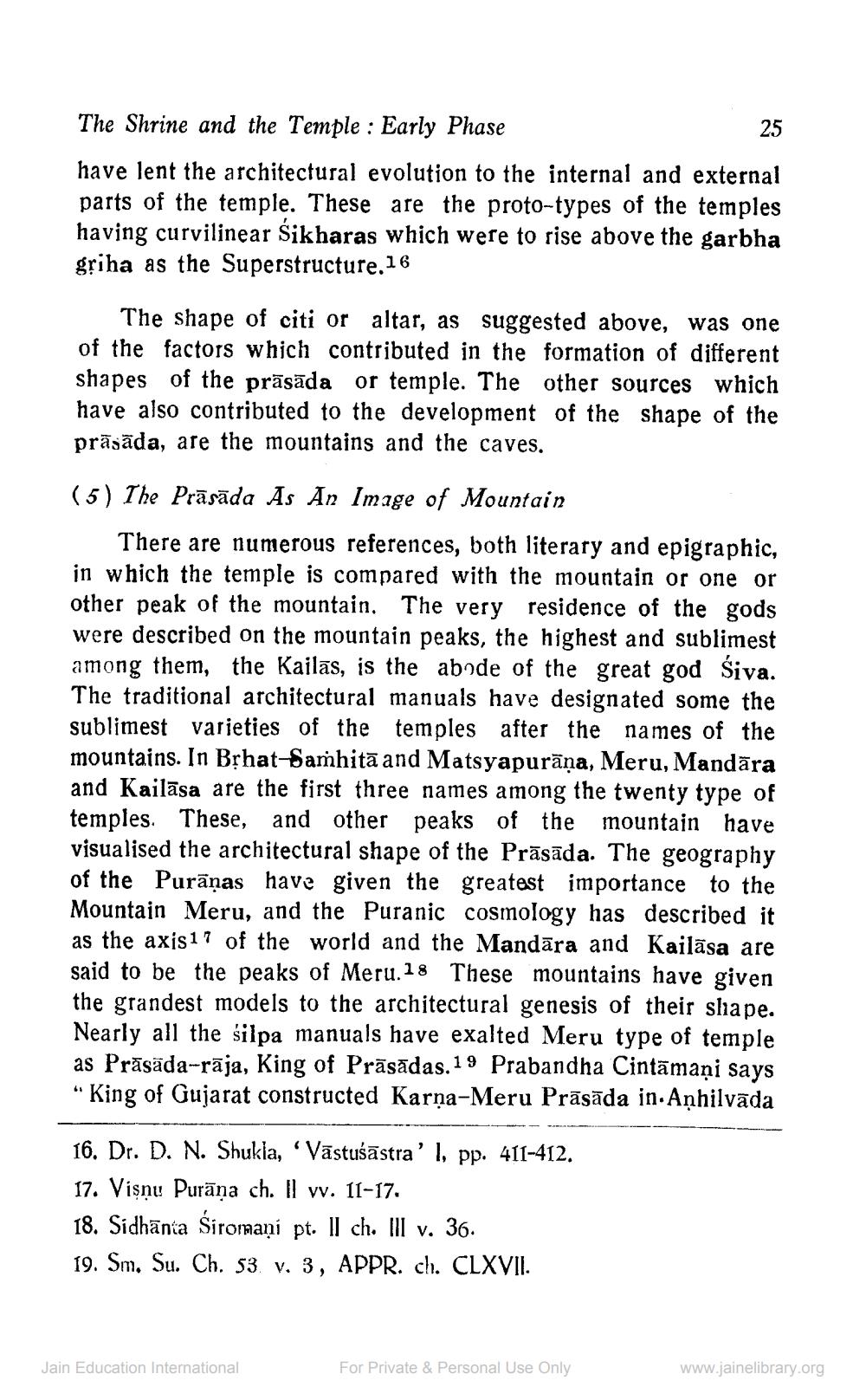________________
25
The Shrine and the Temple : Early Phase have lent the architectural evolution to the internal and external parts of the temple. These are the proto-types of the temples having curvilinear Sikharas which were to rise above the garbha griha as the Superstructure.16
The shape of citi or altar, as suggested above, was one of the factors which contributed in the formation of different shapes of the prāsāda or temple. The other sources which have also contributed to the development of the shape of the prājāda, are the mountains and the caves.
(5) The Prāsāda As An Image of Mountain
There are numerous references, both literary and epigraphic, in which the temple is compared with the mountain or one or other peak of the mountain. The very residence of the gods were described on the mountain peaks, the highest and sublimest among them, the Kailas, is the abode of the great god Śiva. The traditional architectural manuals have designated some the sublimest varieties of the temples after the names of the mountains. In Brhat-Samhitā and Matsyapurāņa, Meru, Mandāra and Kailāsa are the first three names among the twenty type of temples. These, and other peaks of the mountain have visualised the architectural shape of the Prāsāda. The geography of the Purāṇas have given the greatest importance to the Mountain Meru, and the Puranic cosmology has described it as the axis17 of the world and the Mandāra and Kailāsa are said to be the peaks of Meru. 18 These mountains have given the grandest models to the architectural genesis of their shape. Nearly all the silpa manuals have exalted Meru type of temple as Prāsāda-rāja, King of Prāsādas. 19 Prabandha Cintāmaņi says "King of Gujarat constructed Karna-Meru Prāsāda in. Anhilvāda
16. Dr. D. N. Shukla, Vāstuśāstra' ), pp. 411-412. 17. Visņu Purāņa ch. Il v. 11-17. 18. Sidhanta Siromani pt. Il ch. III v. 36. 19. Sm. Su. Ch. 53. v. 3, APPR. ch. CLXVII.
Jain Education International
For Private & Personal Use Only
www.jainelibrary.org




